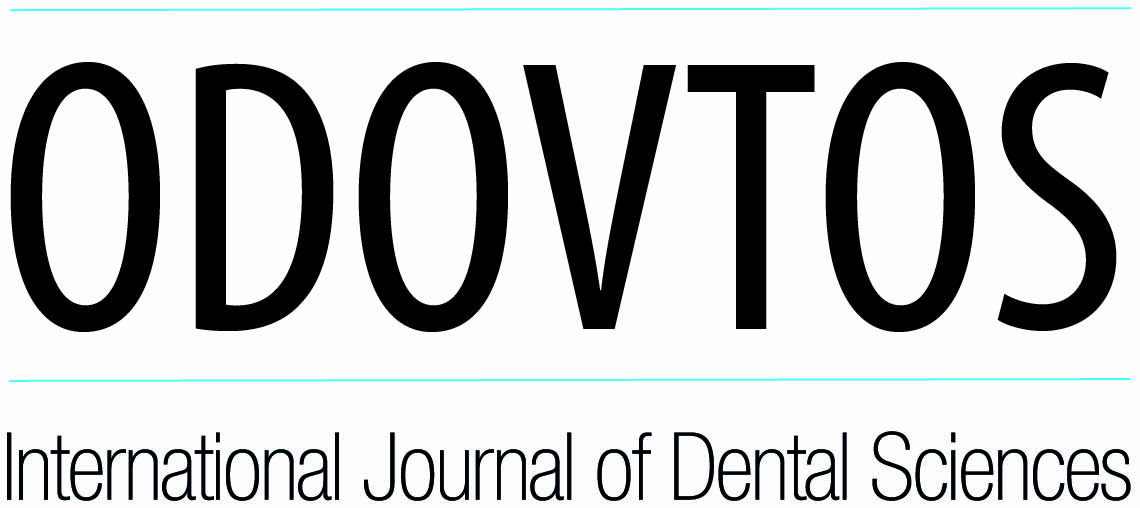Abstract
The oral microbiome, particularly periodontopathogens, may influence the gut microbiome. The aim of this study was to assess the correspondence, diversity, and abundance of periodontopathogenic bacteria in oral and fecal samples from healthy adults. Secondary analyses of 12 public sequences from 6 healthy women, matched by anatomical site (gut and oral cavity), were performed using 16S rRNA-based metagenomics. The sequences were obtained from the BioProject PRJNA834584, published by the Chinese University of Hong Kong, with data generated via Illumina MiSeq. The Shaman application, which relies on Vsearch and DESeq2 for R, along with the Silva database, facilitated the determination of differential abundance and diversity at the species and genus levels between anatomical sites. After dereplication and removal of singletons and chimeras, 352 OTUs were identified. Taxonomic assignment resulted in 148 genera and 80 species, corresponding to 88.64% and 25.85% of annotations, respectively. The dendrogram displayed two distinct clusters separating oral and faecal samples, and principal coordinate analysis accounted for 53.7% of the variance by anatomical site (Permanova test, p=0.003). The Shannon diversity index was 2.14 (95% CI: 1.55-2.73) for fecal samples and 2.28 (2.03-2.53) for oral samples. The Simpson index was 0.70 (0.53-0.88) for faecal samples and 0.82 (0.76-0.88) for oral samples. Periodontopathogenic bacteria were found exclusively in oral samples, with variations in frequency. No periodontopathogenic species were detected in fecal samples. The human microbiome from two different niches in healthy adults shows distinct bacterial compositions between the oral cavity and the gut, with Bacteroides predominating in faecal samples and Streptococcus in oral samples. Greater richness was observed in faecal samples. Both microbiomes exhibited high bacterial diversity, with no significant differences.
References
Peterson J., Garges S., Giovanni M., McInnes P., Wang L,. Schloss J.A., et al. The NIH Human Microbiome Project. Genome Res. 2009; 19 (12).
Tipton L., Darcy J.L., Hynson N.A. A developing symbiosis: Enabling cross-talk between ecologists and microbiome scientists. Vol. 10, Frontiers in Microbiology. 2019.
Sanidad K.Z., Rager S.L., Carrow H.C., Ananthanarayanan A., Callaghan R., Hart L.R., et al. Gut bacteria-derived serotonin promotes immune tolerance in early life. Sci Immunol. 2024; 9 (93).
Lynch S.V., Pedersen O. The Human Intestinal Microbiome in Health and Disease. New England Journal of Medicine. 2016; 375 (24).
Tierney B.T., Yang Z., Luber J.M., Beaudin M., Wibowo M.C., Baek C., et al. The Landscape of Genetic Content in the Gut and Oral Human Microbiome. Cell Host Microbe. 2019; 26 (2).
Gagnière J., Raisch J., Veziant J., Barnich N., Bonnet R., Buc E., et al. Gut microbiota imbalance and colorectal cancer. Vol. 22, World Journal of Gastroenterology. 2016.
Suárez L.J., Arboleda S., Angelov N., Arce R.M. Oral Versus Gastrointestinal Mucosal Immune Niches in Homeostasis and Allostasis. Front Immunol. 2021 Jul 5; 12.
Diaz P.I., Valm A.M. Microbial Interactions in Oral Communities Mediate Emergent Biofilm Properties. Vol. 99, Journal of Dental Research. 2020.
Volant S., Lechat P., Woringer P., Motreff L., Campagne P., Malabat C., et al. SHAMAN: A user-friendly website for metataxonomic analysis from raw reads to statistical analysis. BMC Bioinformatics. 2020; 21 (1).
Buetas E., Jordán-López M., López-Roldán A., Mira A., Carda-Diéguez M. Impact of Periodontitis on the Leakage of Oral Bacteria to the Gut. J Dent Res. 2024; 103 (3).
Lee Y.C., Liu C.Y., Lee C.L., Zhang R.H., Huang C.J., Yen T.L. The Periodontopathic Pathogen, Porphyromonas gingivalis, Involves a Gut Inflammatory Response and Exacerbates Inflammatory Bowel Disease. Pathogens. 2022; 11 (1).
Lourenço T.G.B., de Oliveira A.M., Tsute Chen G., Colombo A.P.V. Oral-gut bacterial profiles discriminate between periodontal health and diseases. J Periodontal Res. 2022; 57 (6).
Ma Z., Jiang Z., Dong H., Xu W., Yan S., Chen J., et al. Microbial Communities and Functional Genes in Periodontitis and Healthy Controls. Int Dent J. 2024; 74 (3).
Kim Y.T., Jeong J., Mun S., Yun K., Han K., Jeong S.N. Comparison of the oral microbial composition between healthy individuals and periodontitis patients in different oral sampling sites using 16S metagenome profiling. J Periodontal Implant Sci. 2022; 52 (5).
Asangba A.E., Mugisha L., Rukundo J., Lewis R.J., Halajian A., Cortés-Ortiz L., et al. Large Comparative Analyses of Primate Body Site Microbiomes Indicate that the Oral Microbiome Is Unique among All Body Sites and Conserved among Nonhuman Primates. Microbiol Spectr. 2022; 10 (3).
Maukonen J., Mättö J., Suihko M.L., Saarela M. Intra-individual diversity and similarity of salivary and faecal microbiota. J Med Microbiol. 2008; 57 (12).
Zhu J., Xie H., Yang Z., Chen J., Yin J., Tian P., et al. Statistical modeling of gut microbiota for personalized health status monitoring. Microbiome. 2023; 11 (1).
Cheung M.K., Tong S.L.Y., Wong M.C.S., Chan J.Y.K., Ip M., Hui M., et al. Extent of Oral-Gut Transmission of Bacterial and Fungal Microbiota in Healthy Chinese Adults. Microbiol Spectr. 2023; 11 (1).
Maki K.A., Kazmi N., Barb J.J., Ames N. The Oral and Gut Bacterial Microbiomes: Similarities, Differences, and Connections. Biol Res Nurs. 2021 Jan 1; 23 (1): 7-20.
Hou K., Wu Z.X., Chen X.Y., Wang J.Q., Zhang D., Xiao C., Zhu D., Koya J.B., Wei L., Li J., Chen Z.S. Microbiota in health and diseases. Signal Transduct Target Ther. 2022; 7 (1): 135.
##plugins.facebook.comentarios##

This work is licensed under a Creative Commons Attribution-NonCommercial-ShareAlike 4.0 International License.
Copyright (c) 2025 Adriana Jaramillo-Echeverry, Nelson Rivera-Franco, Beatriz Parra-Patiño


